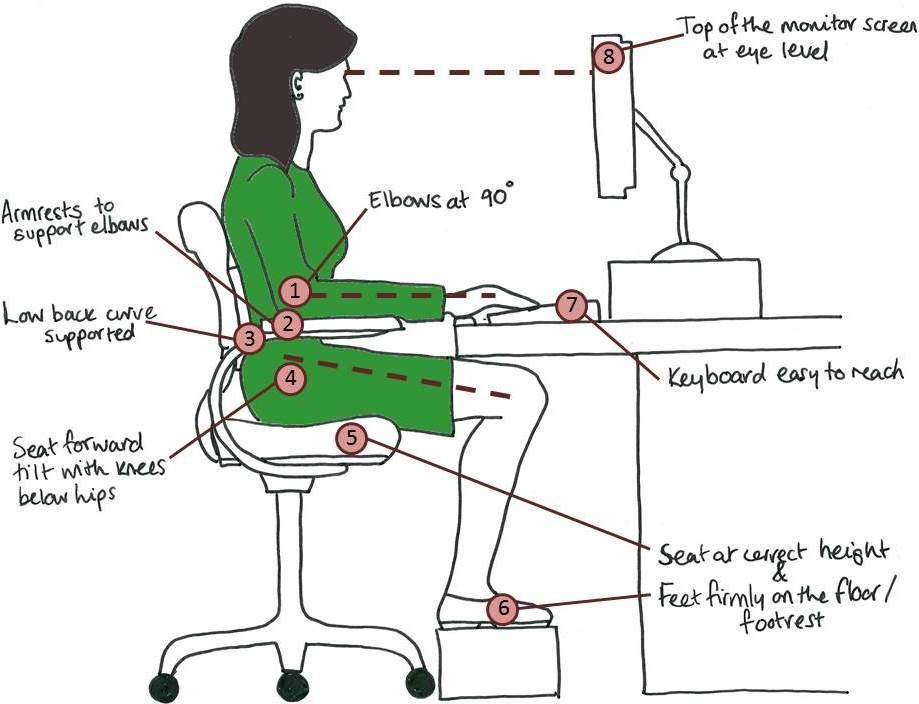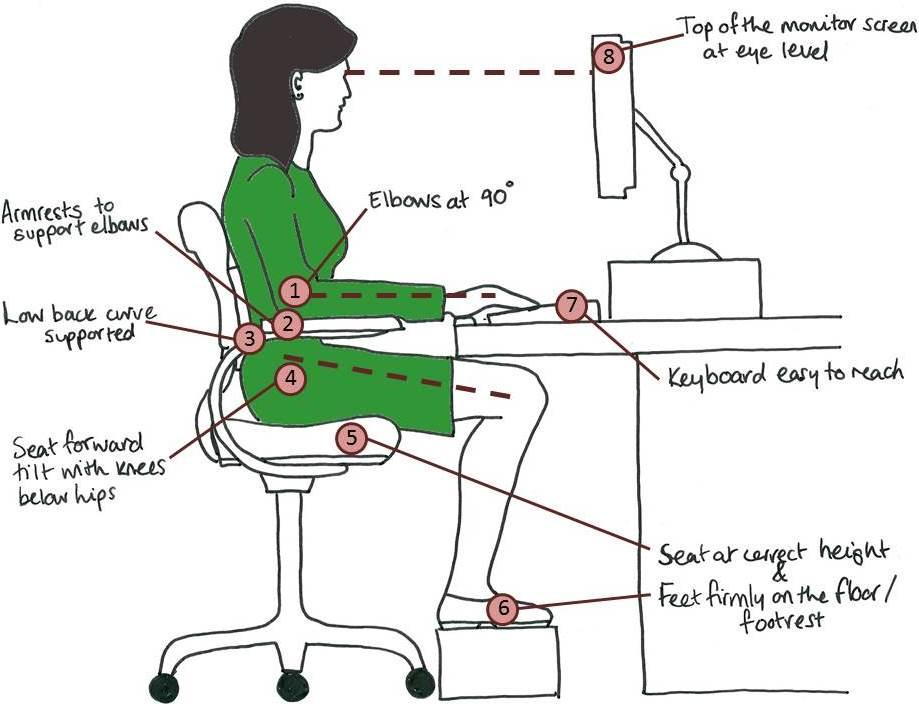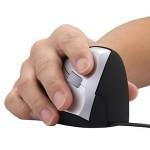
- posted: Jan. 11, 2021
With most of the world now working from home, Dr. Roger thought maybe we should help y'all figure out how to remain pain free after your adjustment! Check out this article from Lorna Rose Osteopathy. It has a lot of great tips to make sure you're sitting in a way that's not going to wrench your spine out of alignment.
TOP 10 DESK POSTURE TIPS
3rd June 2015 by www.lornaroseosteopathy.com
A.K.A. DESK-BASED JOB SURVIVAL TACTICS
If you spend all day sitting at a desk, it’s really important to ensure that your desk is set up in a way that will prevent unnecessary postural strain leading to neck or back pain. It’s a lot easier to adapt your work environment to fit you than it is to try and constantly sit in the “correct” posture (we all naturally take the path of least resistance and energy use when it comes to posture!)

You don’t need to spend thousands of pounds buying expensive equipment to change your workstation, here are some handy (mostly FREE) tips to adapt your workstation to suit you:
1&2. ELBOWS AT 90 DEGREES AND USE A CHAIR WITH ARM RESTS
Why? Having your elbows at 90 degrees and supported by an arm rest means that you can keep your shoulders nice and relaxed. If your desk is too high you will have to shrug your shoulders to use the keyboard, these muscles with shorten over time and you’re more likely to get shoulder and or/neck pain. If your desk is too low you’ll have to slouch use the keyboard and mouse increasing your chances of developing upper back pain.
How? You can do this by adjusting your chair or using cushions.
3. SUPPORT YOUR LOW BACK
Why? If your low back curve is unsupported, your pelvis tends to drop backwards, causing your low back to flatten. This slouched position will cause the intervertebral discs (the fluid-filled discs in between the individual bones in your spine) to lose water more rapidly. This means that your back is more likely to show wear and tear changes. Also, if your low back curve flattens, this will cause your upper back to naturally slouch which will mean your neck has to compensate by bending backwards (so that you can see your screen). This causes the little muscles under your skull at the back to tighten and can sometimes contribute to headaches.
How? To do this you can use a cushion, lumbar support or just a jumper rolled up. Push your pelvis right back in your chair, this will cause your pelvis to tip forward slightly and maintain the natural curve in your low back.
4&5&6. SEAT HEIGHT: HIPS HIGHER THAN KNEES WITH FEET ON THE FLOOR
Why? Having your knees slightly lower than your hips will help your pelvis to stay in a supportive position for your low back and stop you slouching.
How? The best way of doing this is to have an adjustable chair. If your desk is too high you may need to use a footrest. If your chair isn’t adjustable, use cushions to give you a boost.
7. KEYBOARD WITHIN EASY REACH ZONE
Why? This is another important one to prevent shoulder pain. If your keyboard is too far forward you’ll have use your shoulder and arm muscles to hold your arms in position while you type. You could also try using a wrist-rest to keep your wrists in a neutral position while you type. If you do lots of typing, this will also help to prevent repetitive strain.
8. HAVE YOUR SCREEN AT EYE LEVEL
Why? If you’re looking down all day you are more likely to end with upper back pain, neck pain and/or headaches as a result.
How? Ideally you want your screen to be at arms’ length and high enough that your eyes are in line with the top of your screen. If your screen is non-adjustable you can raise its height using empty box files or a pile of big books. If you regularly work from a laptop you should definitely consider getting a separate keyboard to allow you to position the laptop screen at an ideal height.
9. MOUSE WITHIN EASY REACH ZONE
Why? As with the keyboard, having your mouse in an easy to reach place where you don’t have to reach your arm forward will allow you to sit with relaxed shoulders and prevent shoulder pain.
How? It’s very rare that I recommend buying fancy ergonomic equipment, however using a standard mouse requires your hand to face down and demands your shoulder to compensate. To see what I mean, place your hand on the opposite shoulder and turn your hand palm-down as if you were using a mouse, you can feel your shoulder has to adapt to this hand position. Getting a mouse where your hand is in a more neutral position like the one below is a good idea and needn’t break the bank.

10. GET A HANDS-FREE TELEPHONE
Cradling the phone between your neck and shoulder causes severe muscle tension. If you regularly use the phone, consider a headset.
**********************************************************************************************************************************************************
Realizing now that you haven't been following these guidelines? Don't forget to take some breaks from sitting: walk around, stretch, touch your toes, then call Gulph Mills Chiropractic to get back on track for a healthy spine: 484-751-5037.Location
Find us on the map
Courtside Square Apartment Building
570 West Dekalb Pike, Ground Floor, Suite 113
King of Prussia, PA 19406, United States
Office Hours
Our Regular Hours
7:30 am - 12:30 pm
3:00 pm - 6:00 pm
10:00 am - 12:30 pm
3:00 pm - 6:00 pm
7:30 am - 12:30 pm
7:30 am - 12:30 pm
3:00 pm - 6:00 pm
Closed
Select Saturdays from 9am to 11am
Apr 27, May 11, Jun 1
Closed
